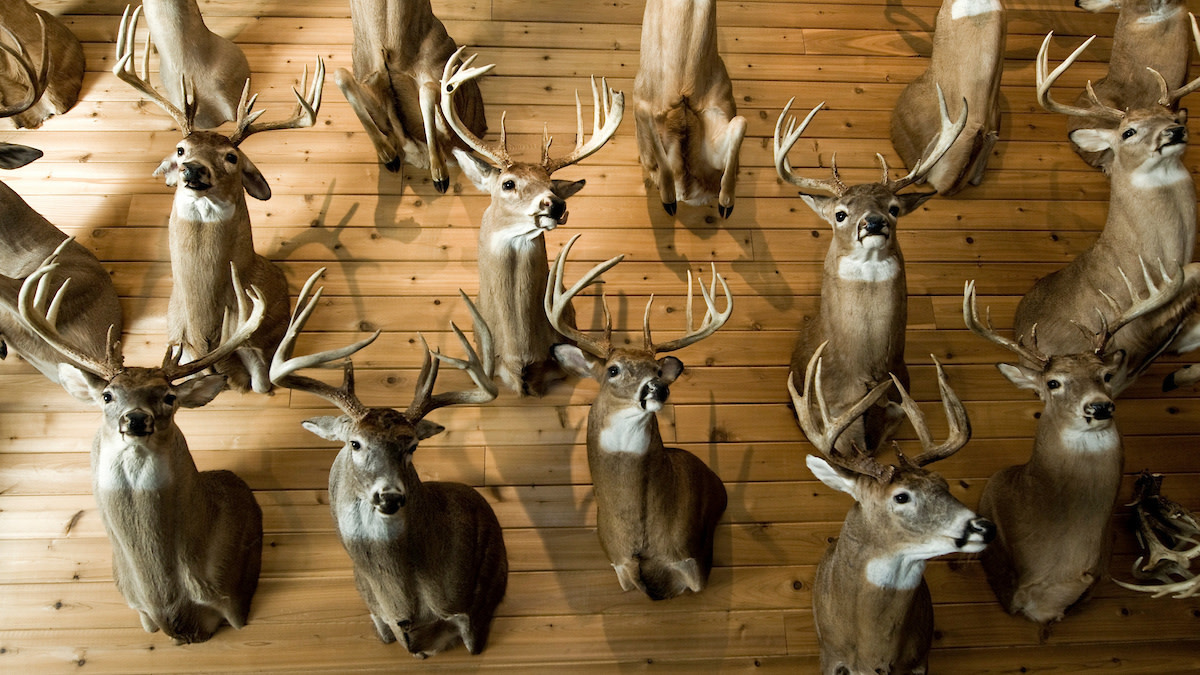
With dozens of Pope and Young bucks under his belt, four of which broke the 200-inch barrier, Adam Hays makes it look easy.
But his consistent success hinges on a methodical, year-round strategy for zeroing in on a specific buck and waiting for the exact right moment to strike. He’s fine-tuned the steps to achieve a 90% success rate on the biggest buck around.
Rather than simply scouting for a spot with decent deer sign, he locates his target early and lets that buck’s behavior drive the hunt.
“I’d rather be chasing a specific animal than just be out there deer hunting,” Hays said. “That’s really what drives me these days—having history on a deer and trying to figure it out and playing that game with them as opposed to just sitting there, hoping a big one’s going to show up.”
Post-Season Recon Before one deer season ends, Hays is already prepping for the next fall.
“It’s really important to get out in the woods before things start greening up,” he said.
Hays scours the woods to locate the core areas of a specific buck—those thick bedding areas with concentrations of large rubs—and hunts for his sheds. While a deer’s range will change in the coming months, these “safety areas” are where mature bucks will return when they get reclusive again come fall.
“It’s really a matter of almost thinking like the deer,” Hays said. “You’ve got to have an intimate knowledge of where that deer is bedding, where you think he’s going to go as the crops and food sources change. It’s just a combination of a lot of things.”
He uses trail cameras over mineral sites right on the edge of these core areas year-round to see exactly what routes the bucks are taking and keep tabs on their movement.
Summer Scouting According to Hays, summer is the best time to locate bucks in your area, particularly on cool evenings just after rain when the moon is peaking—optimal conditions for a mature buck to move early.
To avoid getting busted, he opts for low-impact scouting such as sitting in a stand with a spotting scope or glassing from a vehicle a few hundred yards away as well as analyzing aerial photos.
While these summer bucks will vanish and relocate to core areas a mile or two away once they shed their velvet, this intel allows him to keep an eye on his target buck or identify new targets. Then it’s time to knock on doors and get permission to hunt adjacent properties.
Hunting for the Kill Spot While his goal is to have his gameplan set weeks before the season starts, Hays is always prepared to switch up his strategy as the situation evolves.
“I probably scout more than I hunt during the season because you’ve got to be on the freshest sign,” he said. “You gotta be ready to hang and hunt or change things up at a moment’s notice, even during season.”
He looks for fresh scrapes but wants confirmation a mature buck is making them during daylight before moving in. Strategically placed trail cameras along thick cover, food plots, and rub lines come into play here.
When conditions aren’t absolutely perfect to hunt the buck, he’ll utilize an observation stand where he knows he won’t get nabbed but can gather more pieces of the puzzle and wait for the buck to make a mistake. And then it’s time to get aggressive.
“You gotta react, and you gotta kill him immediately,” he said.
If his target buck gets tagged or he has nothing to go on in-season, Hays said he puts boots on the ground rather than wasting weeks in a dead spot.
“It’s time to get the wind in your face and a stand on your back and start cruising and looking for something to hunt.”
Hays said finding top-tier bucks you can actually hunt is the toughest part of the game. Then after finding the ideal ambush spot, it’s just a matter of waiting for the perfect moon, wind, and weather to align.
“You just can’t go in and not get it done early season. That deer’s going to end up picking up on you. He’s going to see you, smell you, hear you if you don’t kill him,” he said. “I want to kill that deer the first time I go in after him, and I want to stack the deck in my favor.”
That patience usually pays off, according to Hays. But “the only thing definite about hunting these big deer is nothing is ever definite.”
To learn more about how Adam Hays fills his walls with world-class trophies, check out episode 299 of the Wired To Hunt Podcast.
Feature image via John Hafner.






